The beaches of Eleuthera Island, Bahamas are famous for having pink sand, and after the first time I saw these beaches several years ago, I heard and formulated myself some reasons for it. First, I heard that the beaches were pink because of ground up conch shell. This didn’t make a whole lot of sense to me because, when I looked closely at the sand, the pink pieces really didn’t look like shell. My guess was that they were pieces of coralline algae, found everywhere on the reefs.
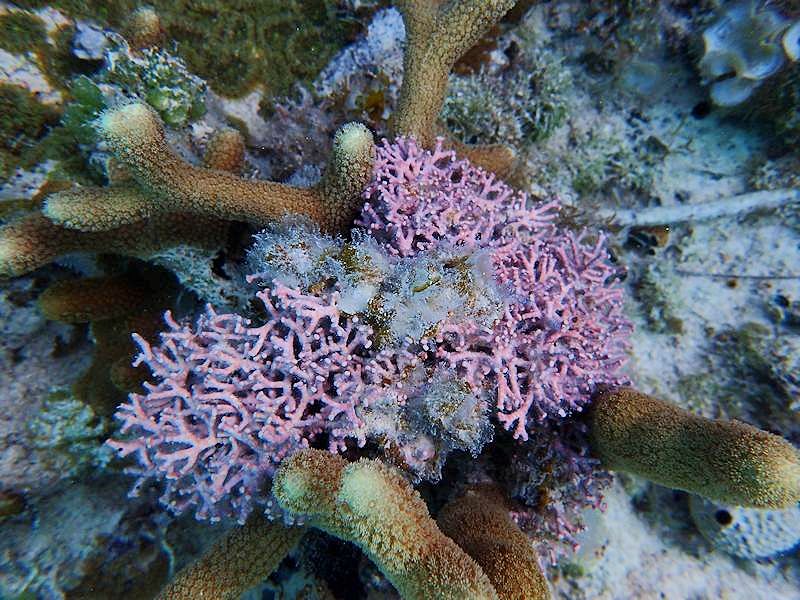
I have learned from studying marine organisms that you cannot always identify something from first look. I have mistaken plants for animals and animals for plants in the past and it appears that I have done the latter again. It started when we recently visited a gift shop in Rock Sound, Eleuthera Island, Bahamas that specializes in making jewelry and other things from the local pink sand. In the store, an explanation of what makes the sand pink was posted along with some rock and sand samples. I had seen the red blobs on rocks and shells many times and written them off to be a type of coralline algae. It makes perfect sense that pieces of this algae mixed in the sand would make it pink. However, the explanation at the shop was that Foraminifera (often referred to as Forams) caused the pink sand. I have known what Forams are for years (I will explain), but my preconception did not allow me to realize those red blobs as Forams. I knew that terms, such as Foraminifera, are not bandied about lightly by island gift shops so I was curious. Back at the boat I consulted the internet and soon came up with a scientific name (Homotrema rubrum) which allowed me to get more specific information and pictures—wow, I love it! I then went back to my stash of shells and found one covered with them!
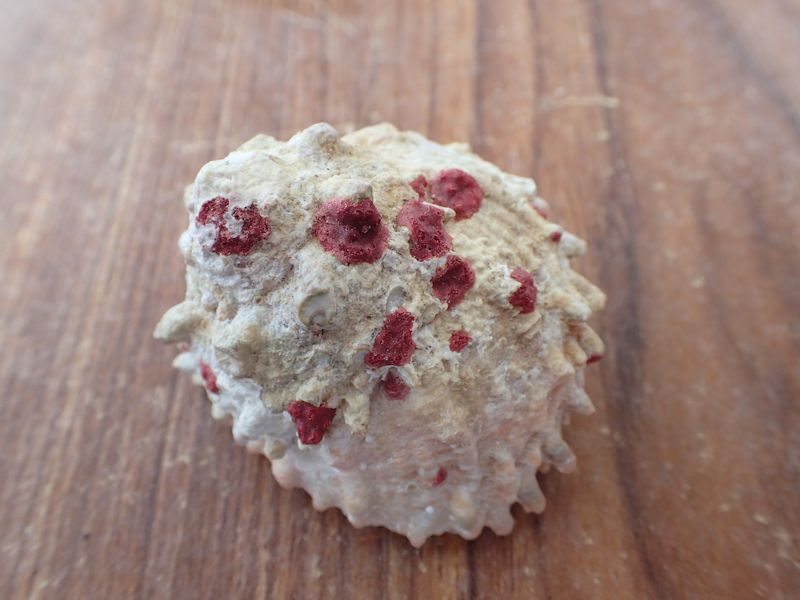
So now–what the heck is a Foraminiferan? Well, it is a one-celled organism (Protist), that is like an amoeba in that it has no particular shape and it is very fluid. Forams make a shell (called a test) around their bodies that can look very much like a snail shell or are made up of specific types of sediment stuck together. How a one-celled organism does this with no brain, nervous system, fingers or toes is one of the mysteries of life. There are species that live drifting about in the water, in the sediment or attached to substrate. Many are microscopic but some can be easily seen with the naked eye. The test structure is made of tiny compartments with pores where the protoplasm streams out in fine threads to catch prey.
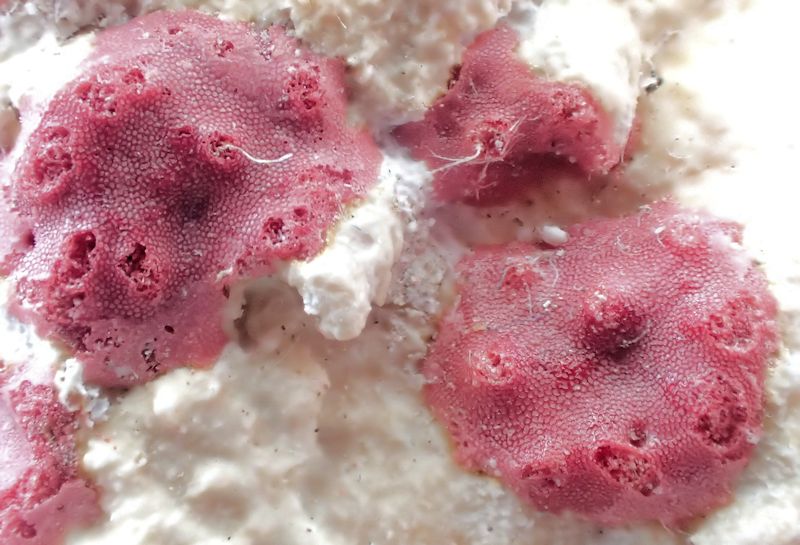
This particular foram makes its test with the help of an algae that lives with it symbiotically. The photosynthetic pigment in the algae lends the color to the test.
At our anchorage in Governor’s Harbor, Eleuthera, I noticed, on the chart, a beach labeled Pink Sand Beach. So, of course, I had to go.
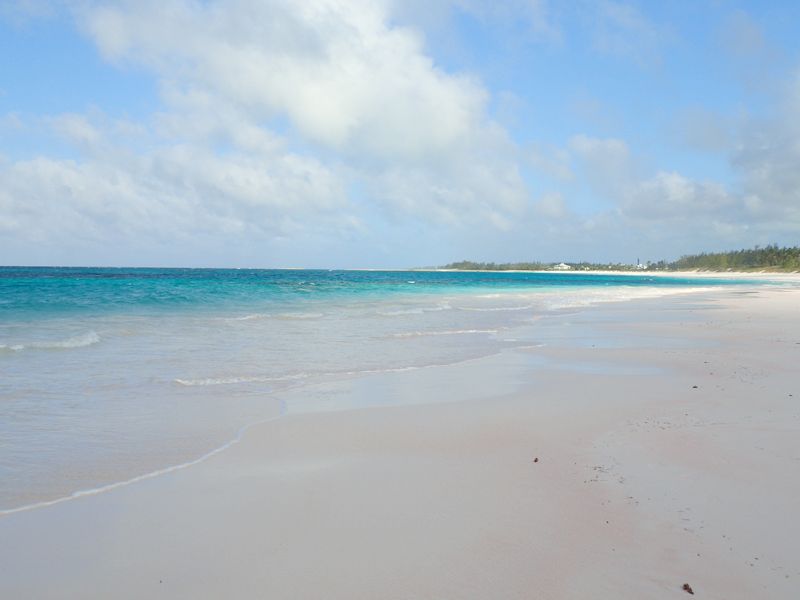
The pinkest part is near the ocean and I think the best time to see it is at low tide. The color eventually fades in the sun and you will see less pink where the sand has been exposed.

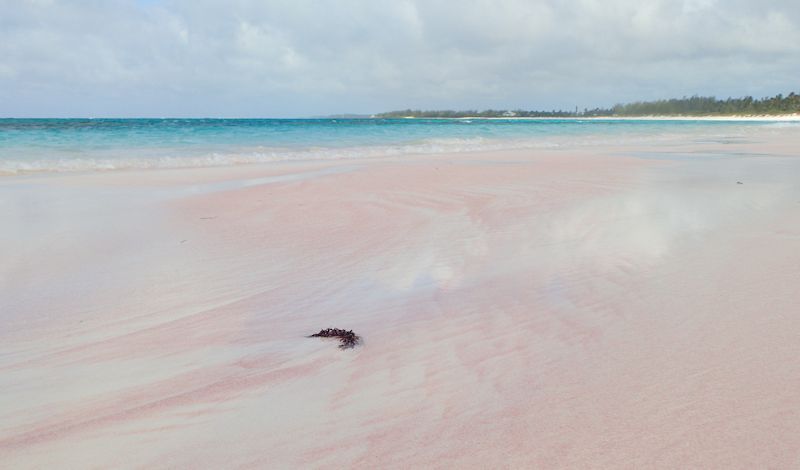
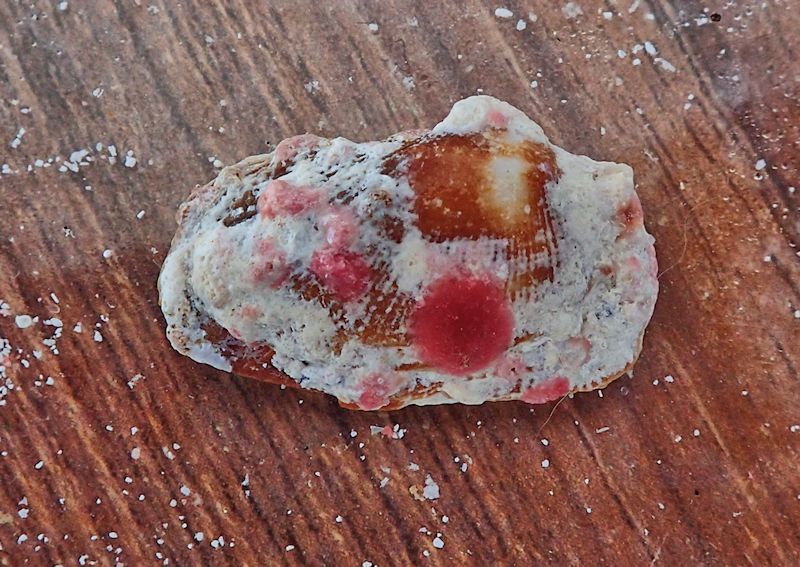
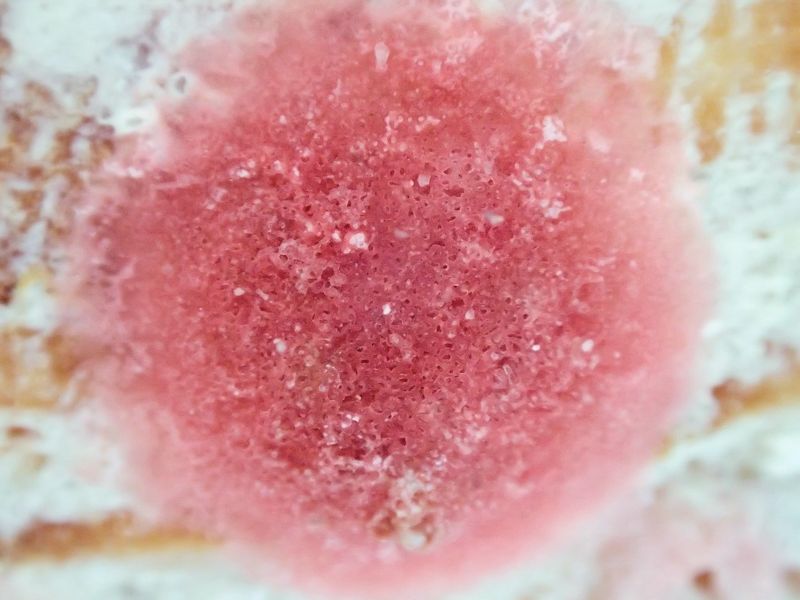
This beach was very clean without any shells that day. We made our way over to some rocks. Along the way I saw this stranded Portuguese Man O War.
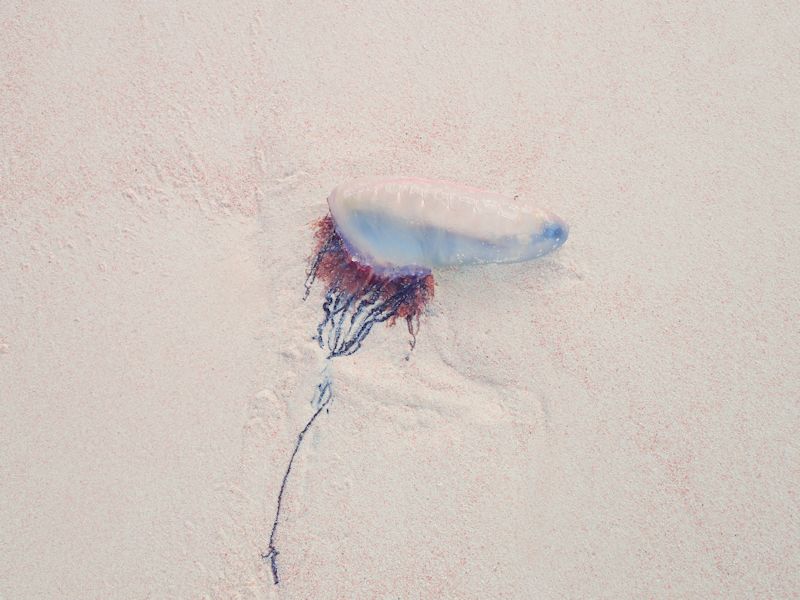
At the rocks there were numerous small potholes left full of water at low tide. This is always a good place to find critters.

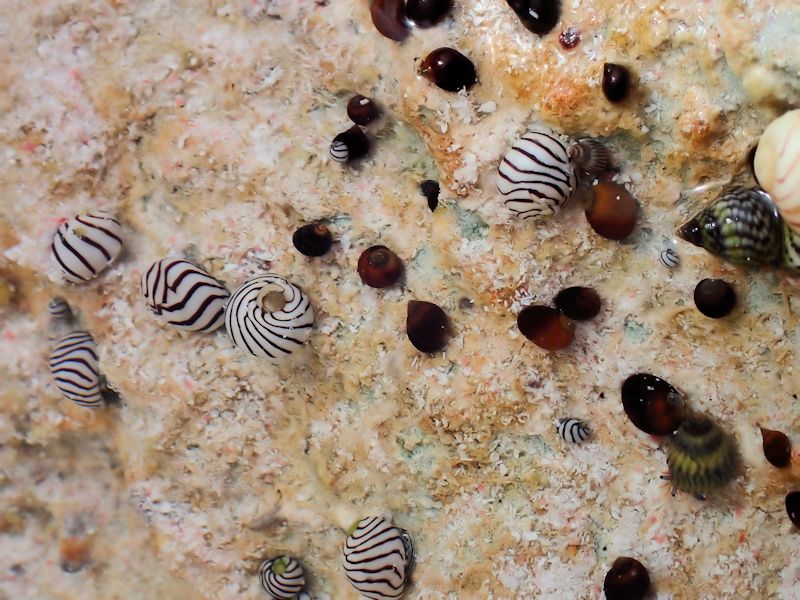

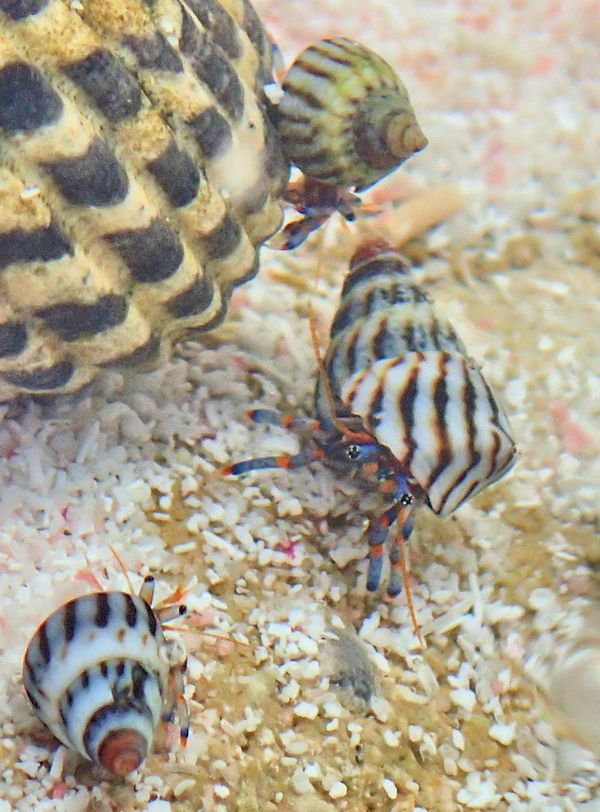
There are always surprises to be found when observing marine life. It’s the best when I clear up my own ignorance.
I have used the following website to obtain information on foraminiferans. http://www.ucmp.berkeley.edu/fosrec/Wetmore.htr
I always learn something new when I read your posts. Well done!
I learn something new everyday. Now I know what the red formations on shells are all about! Cool!
I was visiting one of our beautiful beaches along the false bay coast yesterday and saw a series of rocks that had layers of pink inside them. The part that is pink, is very pouris and although feels hard, is definitely softer than the other rocks along the beach. What are these pink layers in the rocks? Is it perhaps a build up of salt over time?.I would love to post a picture of it.
This sounds quite beautiful. I am not sure of the source of your pink layers. It may be that some of the pink sand was trapped in a layer and preserved when the sand consolidated. Sorry I can’t give you a definitive answer. Thanks for your comment.
Wonderful page- thank you so much. I would love a book of this for the curious cruiser!
Thank you. I’m so glad you enjoyed the post.